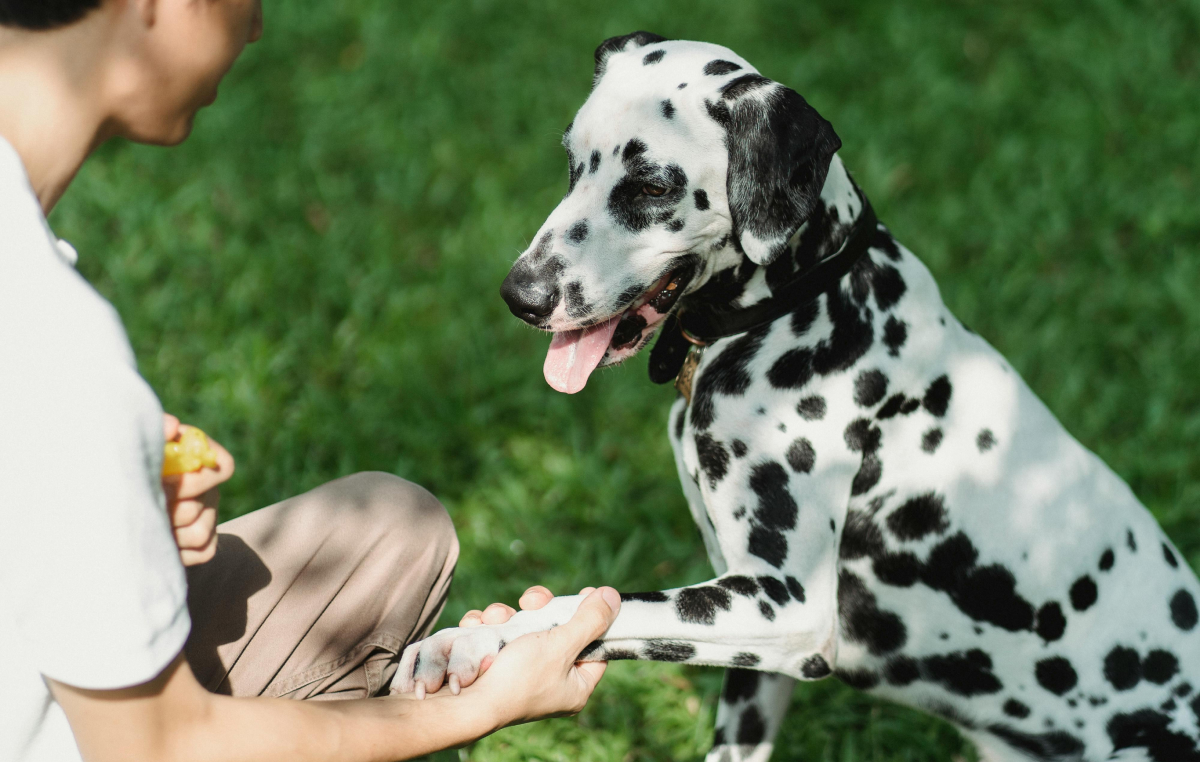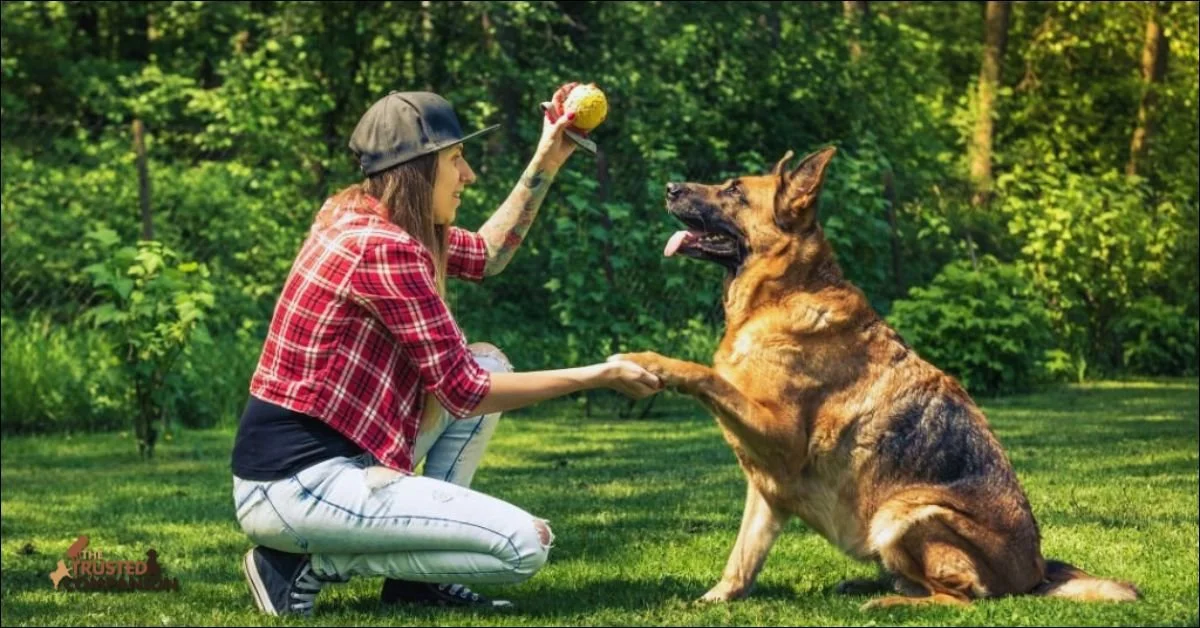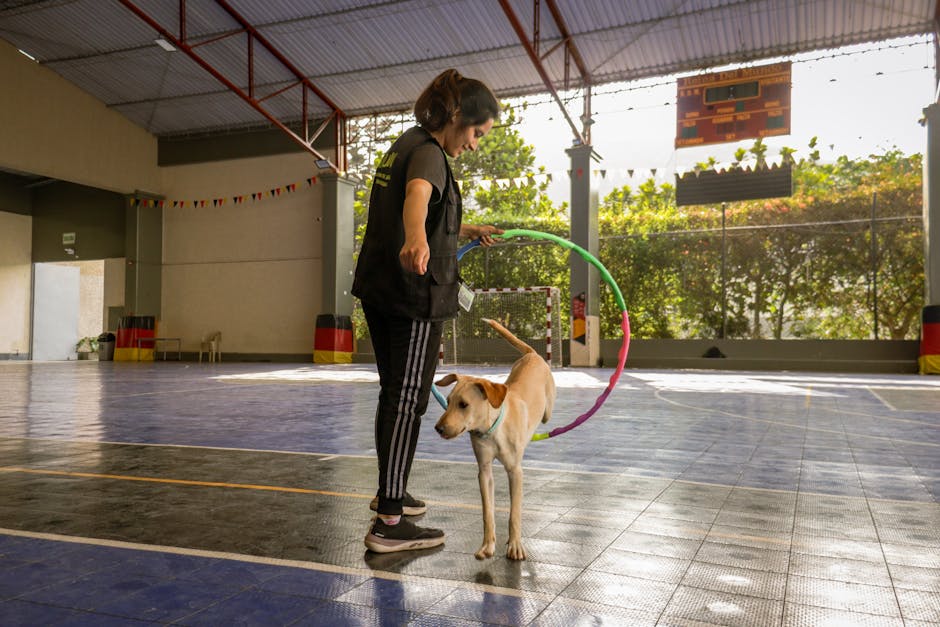Have you ever wondered what basic obedience dog training really teaches your furry friend? It’s more than just “sit” and “stay.” When you invest time in training, you’re building a stronger bond with your dog, keeping them safe, and making everyday life easier for both of you.
Imagine having a dog that listens the first time you call, behaves calmly around guests, and responds well in any situation. Sounds good, right? Keep reading to discover exactly what skills and lessons your dog will learn through basic obedience training—and how these can transform your relationship with your pet.
Core Commands
Core commands form the foundation of basic obedience training for your dog. These commands help you communicate clearly and set expectations that keep your dog safe and well-behaved. Mastering these will improve your daily interactions and build a stronger bond with your furry friend.
Sit
The “Sit” command teaches your dog to pause and hold still. It’s one of the easiest commands to start with and works in almost every situation, from greeting guests to waiting at the door. When your dog sits on command, you gain control over their movement, which reduces impulsive behavior.
Try asking your dog to sit before meals or walks to create a routine. This simple act can make your dog calmer and more focused throughout the day. What happens if you skip this step? You might notice your dog jumping or pulling, which can be frustrating and unsafe.
Stay
“Stay” teaches your dog to remain in one place until you release them. This command is crucial for safety, especially near roads or crowded places. It requires patience and consistency, but the payoff is huge—you’ll be able to trust your dog to wait calmly when needed.
Start with short intervals and increase the time gradually. Use a clear release word like “Okay” so your dog understands when it’s time to move. Have you ever wished your dog wouldn’t chase after distractions? “Stay” gives you the power to prevent that.
Come
The “Come” command is vital for recall and keeping your dog safe off-leash. It teaches your dog to return to you immediately when called, no matter what is happening around them. This command can be a lifesaver, especially if your dog slips out of the yard or gets loose during a walk.
Practice in low-distraction environments first, and reward your dog enthusiastically when they respond. Use a happy tone to make coming to you a positive experience. Can you imagine the relief of knowing your dog will always come back when you call?
Behavioral Skills
Basic obedience dog training builds essential behavioral skills. These skills help dogs behave well in daily life. Training shapes good habits and reduces problems.
Behavioral skills teach dogs how to act around people and other animals. They improve safety and create a happier home for everyone.
No Jumping
Dogs often jump to greet people. This can be scary or annoying. Training stops jumping by teaching dogs to keep all paws on the ground. It shows dogs how to greet calmly and politely.
Bite Inhibition
Bite inhibition means a dog learns to control the force of its bite. Puppies learn this naturally from their littermates. Training helps dogs understand gentle play and avoid hurting people or pets.
Proper Leash Walking
Leash walking skills make walks safe and pleasant. Dogs learn to walk beside their owner without pulling. This skill prevents accidents and keeps the walk fun and relaxed for both.
Socialization Techniques
Socialization techniques are a core part of basic obedience dog training. They help your dog become confident and well-mannered around others. Without proper socialization, your dog might develop fear or aggression, making everyday encounters stressful for both of you.
Interacting With Other Dogs
Teaching your dog how to interact politely with other dogs is essential. Start with calm and controlled meetings in neutral places like parks or training classes. Watch your dog’s body language closely—are they relaxed or tense? If your dog shows signs of stress, give them space and try again later.
You can encourage positive interactions by rewarding calm behavior and gentle play. Avoid forcing your dog into situations where they feel overwhelmed. Instead, allow them to approach new dogs at their own pace. This builds trust and helps prevent fear-based reactions.
Meeting New People
Introducing your dog to new people helps them get used to different voices, looks, and smells. Invite friends or neighbors over and ask them to offer treats or gentle pets. This creates positive associations with strangers.
Make sure your dog stays relaxed during these meetings. If they seem nervous, reduce the intensity by keeping interactions short and quiet. Over time, your dog will learn to greet new people calmly, making walks and visits much more enjoyable.

Credit: www.koruk9.com
Focus And Attention
Focus and attention are key skills taught in basic obedience training. Dogs learn to pay attention to their owner’s commands and actions. This training builds a strong connection between dog and owner. It helps dogs stay calm and responsive in different environments.
Training focus helps dogs understand what is expected. It reduces unwanted behaviors and improves communication. Teaching focus also makes learning new commands easier for dogs.
Responding To Name
One of the first lessons is teaching a dog to respond to its name. This skill grabs the dog’s attention quickly. When called, the dog looks at the owner and prepares to follow commands.
Consistent practice helps the dog associate its name with positive rewards. This encourages the dog to come when called. Responding to name keeps the dog safe and under control.
Ignoring Distractions
Basic obedience also trains dogs to ignore distractions around them. Dogs learn to focus on the owner despite noise or other animals. This skill is important for walks and public places.
Training includes rewarding the dog for staying attentive during distractions. Over time, dogs improve their self-control. Ignoring distractions helps dogs stay on task and behave well.
Advanced Commands
Advanced commands build on the basics and improve your dog’s self-control. These commands help keep dogs safe and well-behaved in different situations. They also deepen the bond between you and your pet by encouraging better communication.
Leave It
The “Leave It” command teaches your dog to ignore distractions. Use it to stop your dog from picking up dangerous or unwanted items. This command helps prevent accidents and keeps your dog focused on you.
Drop It
“Drop It” tells your dog to release something from their mouth. This command is important for safety and for stopping unwanted chewing. It helps you take things away calmly without causing stress for your dog.
Heel
The “Heel” command trains your dog to walk close beside you. It keeps your dog under control during walks. This command makes walks more enjoyable and safer, especially near traffic or crowds.

Credit: www.thetrustedcompanion.com
Consistency And Reinforcement
Consistency and reinforcement are the backbone of basic obedience dog training. Without steady practice and clear signals, your dog can become confused and less responsive. You need to create an environment where your dog understands what is expected and feels motivated to repeat good behavior.
Positive Reinforcement
Positive reinforcement means rewarding your dog immediately after they perform a desired behavior. This could be a treat, praise, or a favorite toy. Rewards help your dog associate good behavior with positive outcomes, making them more likely to obey commands in the future.
Imagine calling your dog to come and rewarding them every time they respond quickly. Over time, your dog learns that coming when called leads to something enjoyable. This builds trust and encourages your dog to listen more attentively.
Are you paying attention to the timing of your rewards? Giving treats too late can confuse your dog. To be effective, the reward must follow the behavior within seconds.
Daily Practice Routines
Training your dog a little every day beats long, infrequent sessions. Short, consistent practice helps your dog retain commands and strengthens your bond. Setting a specific time each day for training can make it easier for both you and your dog to stay committed.
Try mixing commands you’ve already taught with new ones during these sessions. This keeps your dog engaged and reinforces their learning. For example, start with “sit,” then add “stay,” and finish with “come.”
What small changes can you make in your daily routine to fit in these practice moments? Even five minutes can make a big difference when repeated consistently.
Understanding Dog Psychology
Understanding dog psychology is key to effective obedience training. Dogs communicate mostly through body language and emotions. Recognizing these signals helps trainers respond correctly.
Training is not just about commands. It involves knowing how dogs think and feel. This builds a stronger connection and improves learning.
Recognizing Body Language
Dogs use their bodies to show feelings. Tail wagging, ear position, and eye contact are signs to watch. A relaxed dog has a loose body and soft eyes. A tense dog may have a stiff posture and raised hackles.
Learning these signs helps trainers avoid stress and fear in dogs. It also guides when to praise or correct behavior. Reading body language creates clearer communication between dog and owner.
Building Trust
Trust is the foundation of obedience training. Dogs learn faster when they feel safe and loved. Consistent routines and gentle corrections build this trust.
Respect and patience are important. Avoid harsh punishments or yelling. Let dogs explore commands at their own pace. This makes training a positive experience for both.
Trust encourages dogs to focus and obey willingly. It turns training into a bonding time, not a struggle.

Credit: k9connoisseur.com
Frequently Asked Questions
What Basic Commands Does Obedience Training Include?
Basic obedience training teaches commands like sit, stay, come, down, and heel. These commands help improve dog behavior and communication with owners. They form the foundation for good manners and safety.
How Does Obedience Training Benefit My Dog?
Obedience training enhances your dog’s social skills and mental stimulation. It reduces unwanted behaviors and strengthens the bond between you and your dog. Well-trained dogs are happier and more confident.
How Long Does Basic Obedience Training Take?
Training duration varies, but basic obedience usually takes 4 to 8 weeks. Consistent daily practice of 10 to 15 minutes speeds up learning. Patience and positive reinforcement are key to success.
Can Obedience Training Improve Dog Safety?
Yes, obedience training teaches dogs to respond to commands, preventing dangerous situations. Commands like “come” and “stay” keep dogs safe near traffic or strangers. Training reduces risks of accidents and injuries.
Conclusion
Basic obedience training builds trust between you and your dog. It teaches simple commands like sit, stay, and come. These commands keep your dog safe and well-behaved. Training also helps reduce bad habits and frustration. Dogs learn to listen and respond better.
This makes daily life easier for both of you. Consistency and patience are key to success. Start with small steps and practice often. Enjoy the stronger bond and happier moments with your dog. Training is a gift that lasts a lifetime.







